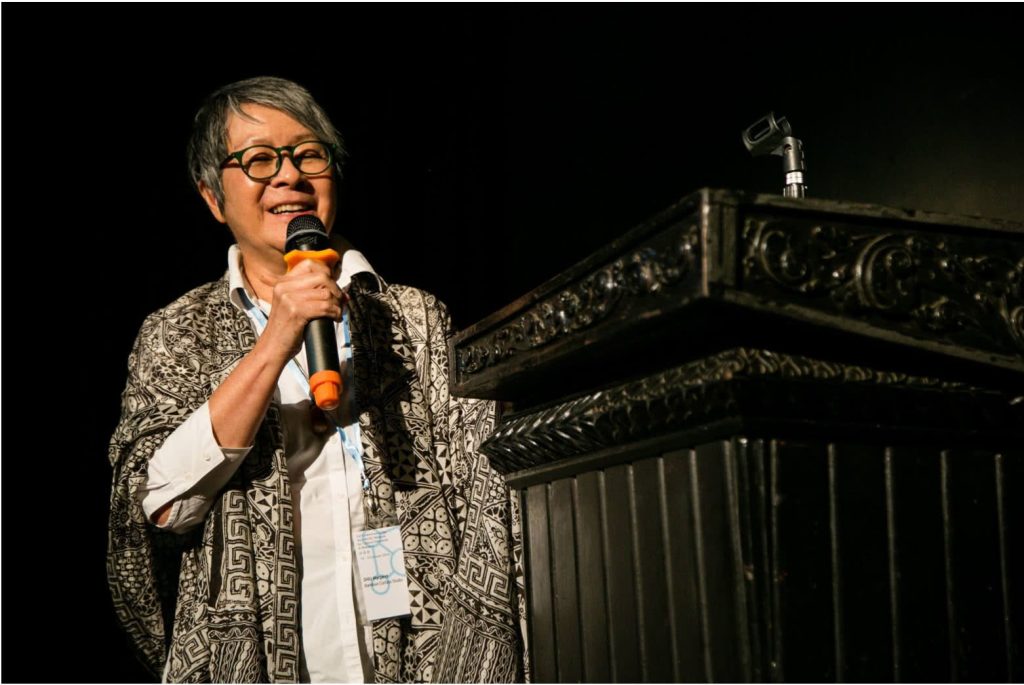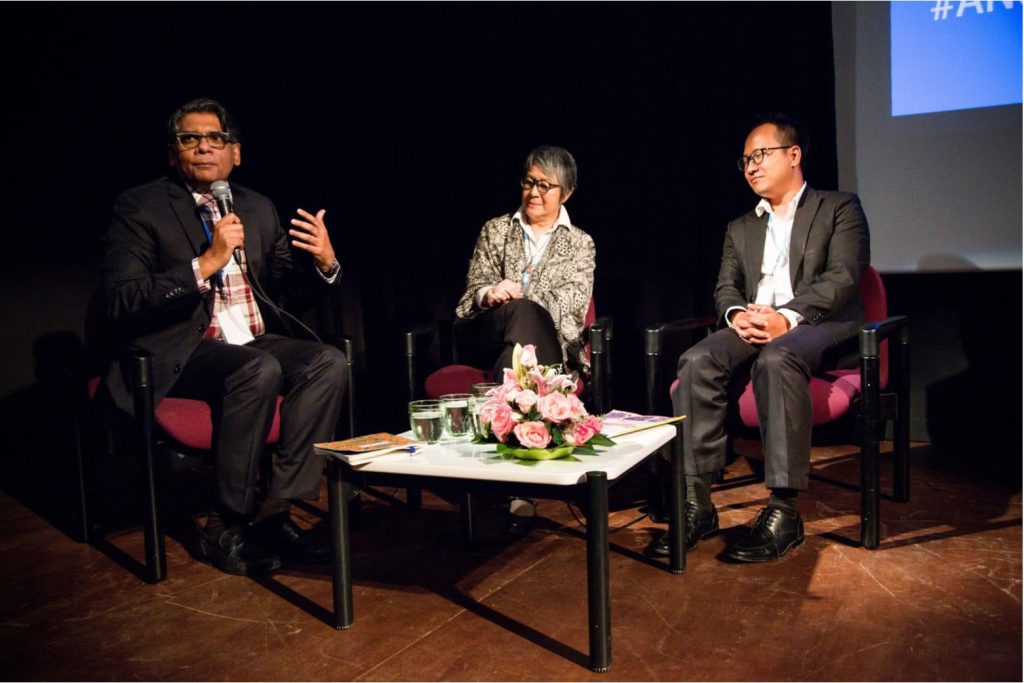CLA’s and MCH’s shared memories of Margaret Shiu
The passing of Margaret Shiu, founder of Bamboo Curtain Studio (BCS), one of the most respected cultural figures in Taiwan, on August 30th is a great loss to the Southeast Asian and Asian art community. Like many regional arts and cultural organizations that have had contact with and were deeply influenced by her, Cambodian Living Arts (CLA) and Mekong Cultural Hub (MCH) share their deep condolences over her passing. In memorial of Margaret Shiu and her legacy, we have a talk with Phloeun Prim (Executive Director, CLA), Frances Rudgard (Managing Director, MCH), Jennifer Lee (Program Coordinator, MCH) and Phina So, (Program Manager CLA and independent writer) about their memories with Margaret and the enormous influence she had on them on both individual and organizational levels.
Let us start with your first memories with Margaret. How did you meet her and what was your impression about her back then?
Phloeun: It was around 2015 when CLA started to do outreach in Southeast Asia to find someone to be the keynote speaker for our ANCER Conference in Cambodia. And we found Margaret Shiu, not somewhere far away, but right here, in Asia. After listening to her opening keynote“Power of Cross Discipline Network: Action of a New Generation of Culture Workers in Asia,”I believed that she was one of the pioneers who carried the vision to build Asian-to-Asian platform. And Margaret had always advocated for it for all her life.
Frances: After we met Margaret and Iris (BCS’s manager at that time) at ANCER, they wanted BCS to work with CLA to bring some fellows to Taiwan to exchange around the concept of Cultural Leadership. Her belief in the contribution that CLA and CLA’s fellows could make in Taiwan led to the opportunities that allowed us to start Mekong Cultural Hub. One of the very nice things she did during our visit was arranging for the Fellows to meet with a Cambodian-born Taiwan Member of Parliament. She was amazing in connecting the formal policy makers with grassroot artists and bringing people of different hierarchies and pushing them into conversation.
Phina: My experience with Margaret is on a more personal level. We had a very good time talking about Cambodia and the issues of Art and Culture with her. Besides this, the things I remember about BCS and Margaret’s vision are that they were very welcoming, and how they care about the environment. There was no plastic welcome and plenty of cloth bags for you to use. When you were there and went around the area, you would see the bamboo, the trees, the flowers were being taken care of, and you could see the environmentally conscious spirit in the whole community around. That spirit still influences me today.
Jennifer: I didn’t have personal contact with Margaret until recent years but, of course in Taiwan, I had known of her for many, many years. The first time I met her was at a reception for a European research team visiting a graduate school. Margaret was one of the invited local representatives and I was the director of PANDA Association, a network of managers of performing arts. After I shared what our association was about, in the break time, Margaret told me: “You are doing an important job. It’s not easy. But keep doing it.” Then she handed me her card saying: “If you need a space or something, maybe BCS could provide, just let me know.”
Another time, I was invited to run a workshop at BCS about sustainable careers for art managers. I was so nervous when Margaret joined my team. But she turned out to be the one who paid the most attention and asked a lot of questions. She didn’t act like someone important, even though she was. I didn’t feel she was a woman in her 70s, but a young, open minded, passionate, curious about everything and always wanted to learn more.
What makes you remember most about her?
Phloeun: One character of Margaret was her pursuit of things in a very nice way because she was very honest and direct. She was just a little woman, but she moved things. She stood for the art community in East and Southeast Asia as a strong, and fearless advocator, in a very beautiful way.
Phina: As a person, Margaret is very down to earth and also very understanding in terms of cultural and context differences of this region. It was the time of my rising career, I did a presentation about how I created a community of women writers with not so much confidence. But Margaret had her way to make people feel they belong to a team so you don’t feel any inferiority, you don’t feel excluded when working with her.
Jennifer: The most frequent keywords I’ve heard from her were: Network, Talent, and Environment. She usually spoke out for others or for the ecosystem of culture and arts. That’s why the respect for her is really sincere across the whole sector.
Frances: One of the things I was amazed about Margaret was how energizing she was. I remember when Phloeun and I first met Margaret and Iris in Phnom Penh, it was exciting to see this dynamic pair working together. Margaret was full of ideas and Iris was working with her to make everything happen. It was such an amazing energy and dedication over time. Margaret was very funny as well.

What influences do you think she has on you as well as the art and cultural community in Southeast Asia?
Phina: Connecting people was something about Margaret that influenced me.
Jennifer: I think particularly for her work at BCS, even if you are not in Taiwan, you could tell how influential she is. She simply started things from the grassroots, and we started from what she had built. The way she and her team worked was that they tried hard with what they had. In the early years of BCS, she just gave the key for whoever wanted to use the space to do something of their own. Later on when they had a team they still kept this kind of generous sharing spirit, of course not giving you the key, but if you approach them, they would respond in a way they could to support you.
Frances: After she passed away, I saw someone posted on Facebook in tribute to Margaret. He quoted her saying to him: “You have to bring back [home] what you learn from here. I believe you can change things at the right time.” I feel it sums up everything about Margaret to me. That was the spirit Margaret gave to people which influenced many, including me.
On an organizational level she’s definitely very influential to MCH. I got so much inspiration from her way of working. As Jennifer mentioned about starting with something you have, I feel like that was a lesson that Margaret probably deliberately communicated really clearly to all Fellows from Cambodia when we visited Taiwan in 2016. The way BCS organized that trip for us was like an example of how people and organizations can make significant things happen with small resources and through relationships, networks and passion. It was so relevant to the situation that we were all in. It gave everybody the feeling we could do something meaningful even if it’s small, and we left feeling let’s do as much as we can with what we have.
Phloeun: The influence of Margaret somehow lies in the legacy of BCS and in her work. The fellowship program was, in her vision, to plant seeds of connections all over Southeast Asia. She is not a monument, not living in an institution, but in all this friendly and family connection across the region. I think it is this legacy that lives longer than herself.
Thank you so much for your sharing.
Power of Cross Discipline Network: Action of a New Generation of Culture Workers in Asia
Summary of Margaret Shiu’s Keynote for ANCER Phnom Penh January 14, 2016
As Asia goes into a new generation of technology savvy interconnected youth, there is need of a new recognition of their potential to bring in a lot of innovative change to Asia. This continent has been in the past, subdivided and disjointed on the ground level. Let us examine the possible platforms that can lead Asian youth to see Asia in new ways via creative arts and culture policies, and can lead their enthusiasm to actions: locally, regionally then, nationally, and finally join others internationally for concrete change.
There are many issues that they can share, and or to learn from mutual experiences. The world needs solutions in social, cultural, historical, ethnic, religious, ecological, health, urbanization and economic sustainability problems that are now blowing up in many parts of the world, and Asia is no less part of the problem itself. Let us see what cross discipline art can do, especially whereby young creatives bring forth experience, via face to face reality, working on issues directly with professionals in other fields, and bring back best practices for increased outcomes. There are indeed many such examples to inspire and Asian government should have arts policies that support and facilitate such platforms for Asian youth to work together.

Most of these are from European INGOs and few Asian national NGOs, are actively moving towards that direction. Let us see those few active Asian platform working in virtual and real ways to match the needs, and move these energy for better interconnected ways.